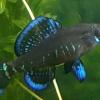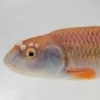
Another Okefenokee thread
#21

Posted 16 March 2019 - 12:33 PM
Trying to raise the survival rate for my latest batch of fry, I'll be moving in a few months and want to have a strong colony when I have to give them up. I have quite a bit of leaf litter that I keep in tank but want to do more. Has anyone ever collected green water from a local lake/pond/river? I don't have a green thumb when it comes to making my own green water, and a river near my house seems like a choice supply of infusoria. How much risk am I taking by doing so? My gut tells me the widespread fear of the outdoors is overblown but I'd appreciate a second opinion.
Realistic cons: fish or fry-eating bugs (dragonfly larvae), environmental pollution, infectious agents. I plan to collect small 50 ml volumes daily in a clear tube and manually inspect for large bugs. This may not protect me from damsel fly eggs. I imagine that with regular water changes, adding small amounts of any environmental pollutant will be diluted enough to not matter much.
Ways to go about this:
1) Add sample directly to tank. Has the advantage of immediate returns and getting all those tast infusoria, including the ones that do not grow well in culture, directly to the little piggies. Major con is the risk of introducing undesirables.
2) use river water to seed my flask of aerated oak leaves. Major advantage is that hopefully any obligate fish parasites will die after a spell. Major disadvantages include the die off of anything that doesn't like my flask, and this plan requires leaving the flask alone for a spell, my piggies are hungry now.
Any thoughts appreciated, thanks in advance.
#22

Posted 16 March 2019 - 02:37 PM
This
Do it
#23

Posted 16 March 2019 - 03:13 PM
I agree. Usually not an issue. More likely to pick nasties up from anything cultured intensively in my opinion.
The member formerly known as Skipjack
#24

Posted 16 March 2019 - 04:14 PM
Jack,
This is a realistic concern and a great question! From my opinion and experience, part of the equation should also consider the risk for the specific fish that you are creating the space for reproduction. For example, are the fish rare and spawn very infrequent where you would tend to be more risk averse, or are you willing to take a little bit more risk to have better growth rates for the fry? I had a batch of peat-spawning killifish wiped out by a dragon fly larva that came in from an outdoor green water culture. Considering that there was a four month incubation period for the eggs, they were not an easily replaceable fish, and have a relatively short life span, I wish that I would have been more careful. However, for most of the spawning that happens in my tank I commonly use plants and green water from outside with great success for both native and tropical fishes.
Good luck!
Bruce
#25

Posted 18 March 2019 - 03:37 PM
You can feed wild plankton after careful inspection (watch out for Hydra too, not just predatory insects). But culturing them (Moina, Daphnia, Cyclops, etc) in outdoor tubs with tree leaves and a couple handfulls of soil is easy, pretty safe, and more convenient.
Gerald Pottern
-----------------------
Hangin' on the Neuse
"Taxonomy is the diaper used to organize the mess of evolution into discrete packages" - M.Sandel
#26

Posted 31 March 2019 - 02:27 PM
I started adding river water daily on a drip line, and I also spiked an infusoria culture with it. I did inspect carefully for hydra and filtered through fine gauze for good measure. The infusoria culture has gotten noticeably cloudier and I see small micro-critters like copepods more often. Now that that's happened I'm just using my indoor culture to feed fry, along with some microworms and sometimes a drop of activated yeast. I'm seeing a lot more fry than I have in the past, they're developing and swimming well, which seems like a good sign.
#27

Posted 31 March 2019 - 04:49 PM
I started adding river water daily on a drip line, and I also spiked an infusoria culture with it. I did inspect carefully for hydra and filtered through fine gauze for good measure. The infusoria culture has gotten noticeably cloudier and I see small micro-critters like copepods more often. Now that that's happened I'm just using my indoor culture to feed fry, along with some microworms and sometimes a drop of activated yeast. I'm seeing a lot more fry than I have in the past, they're developing and swimming well, which seems like a good sign.
Sounds exciting. You must be doing something right!
The member formerly known as Skipjack
0 user(s) are reading this topic
0 members, 0 guests, 0 anonymous users










